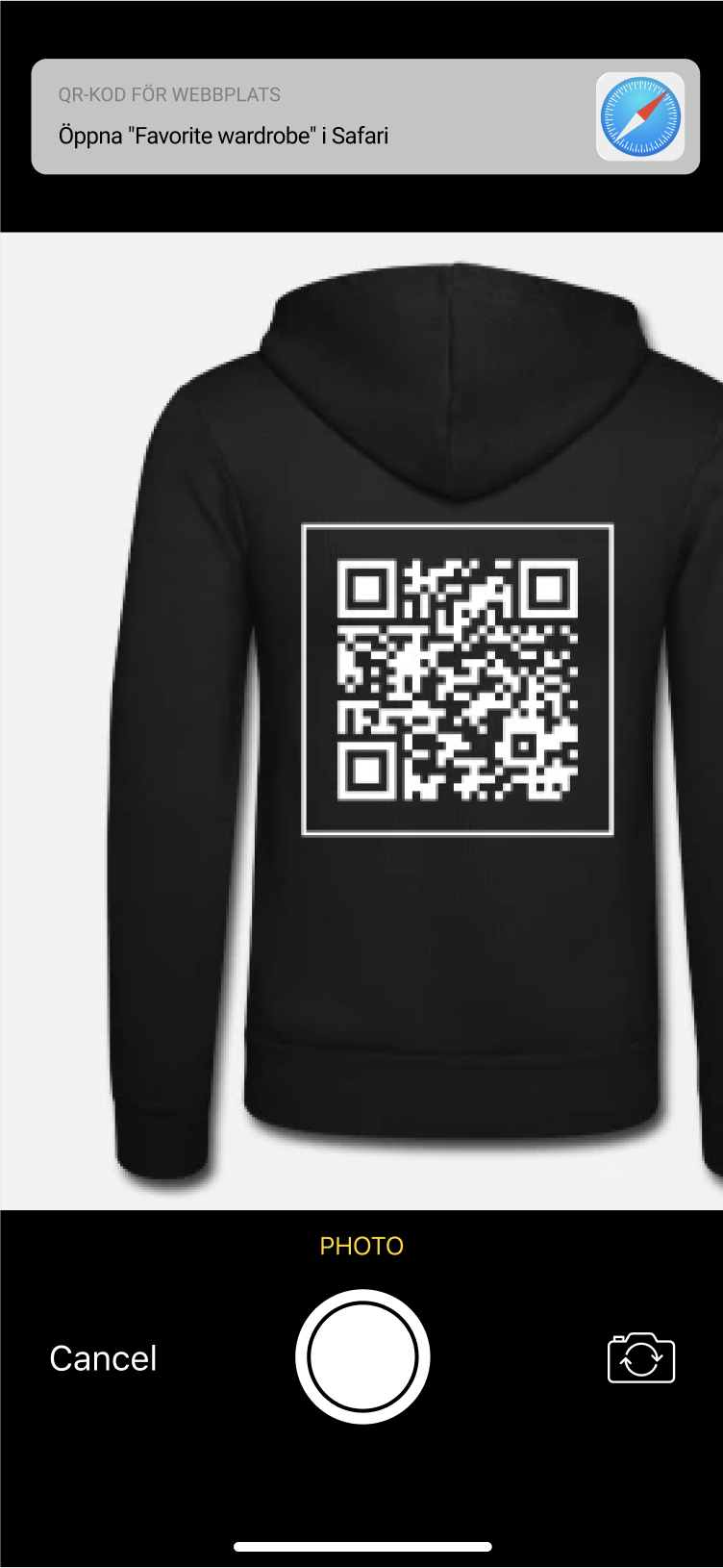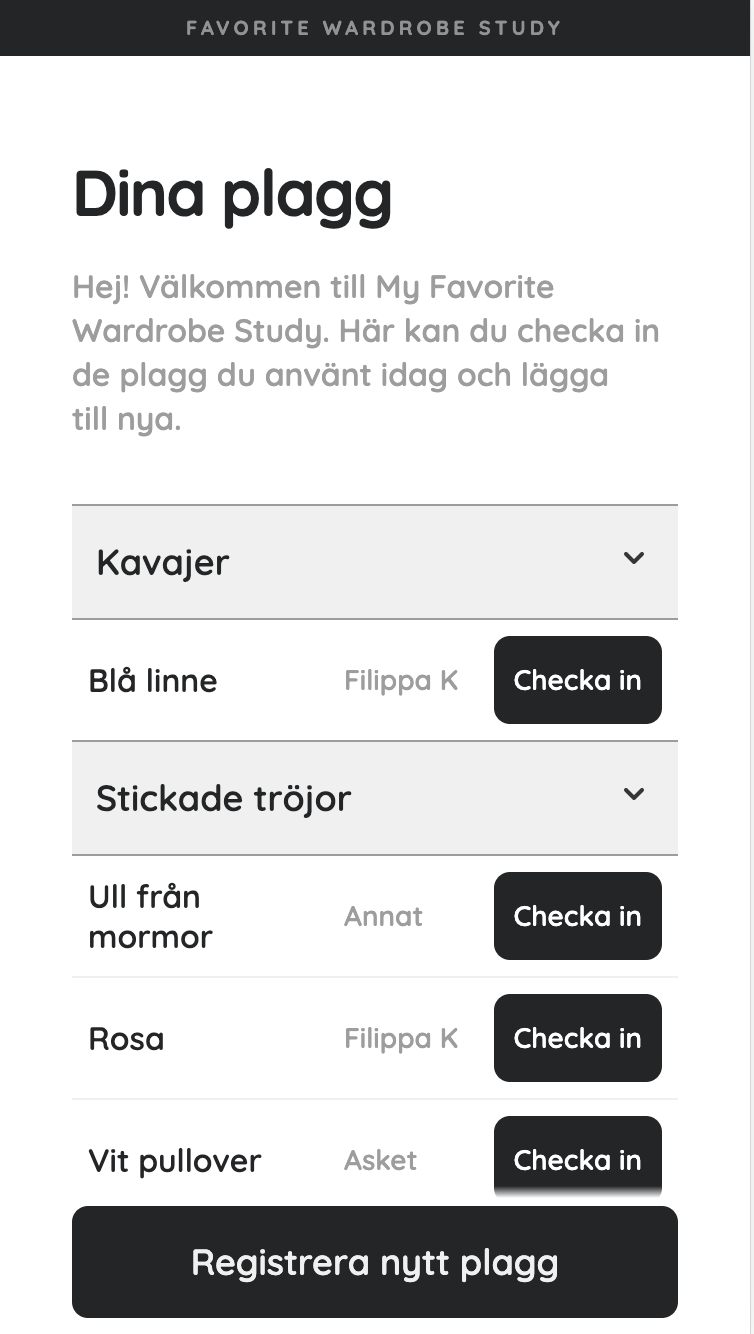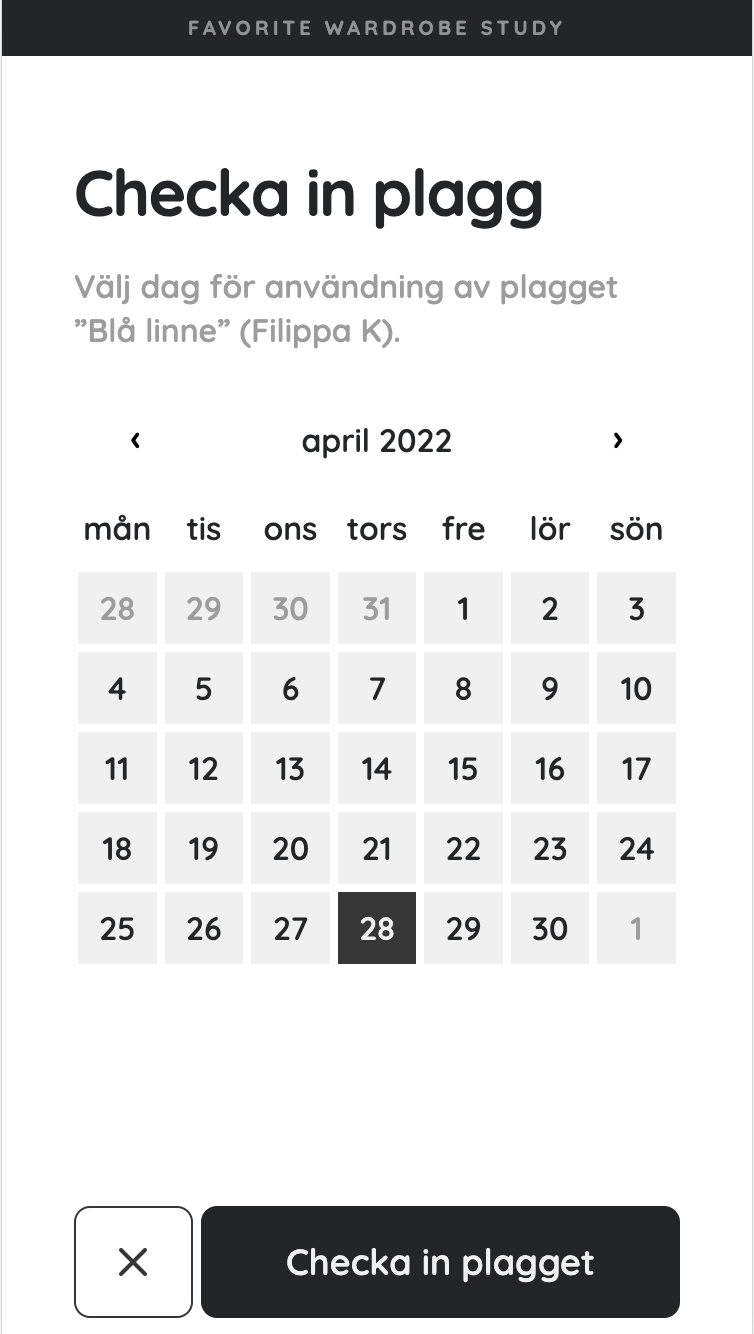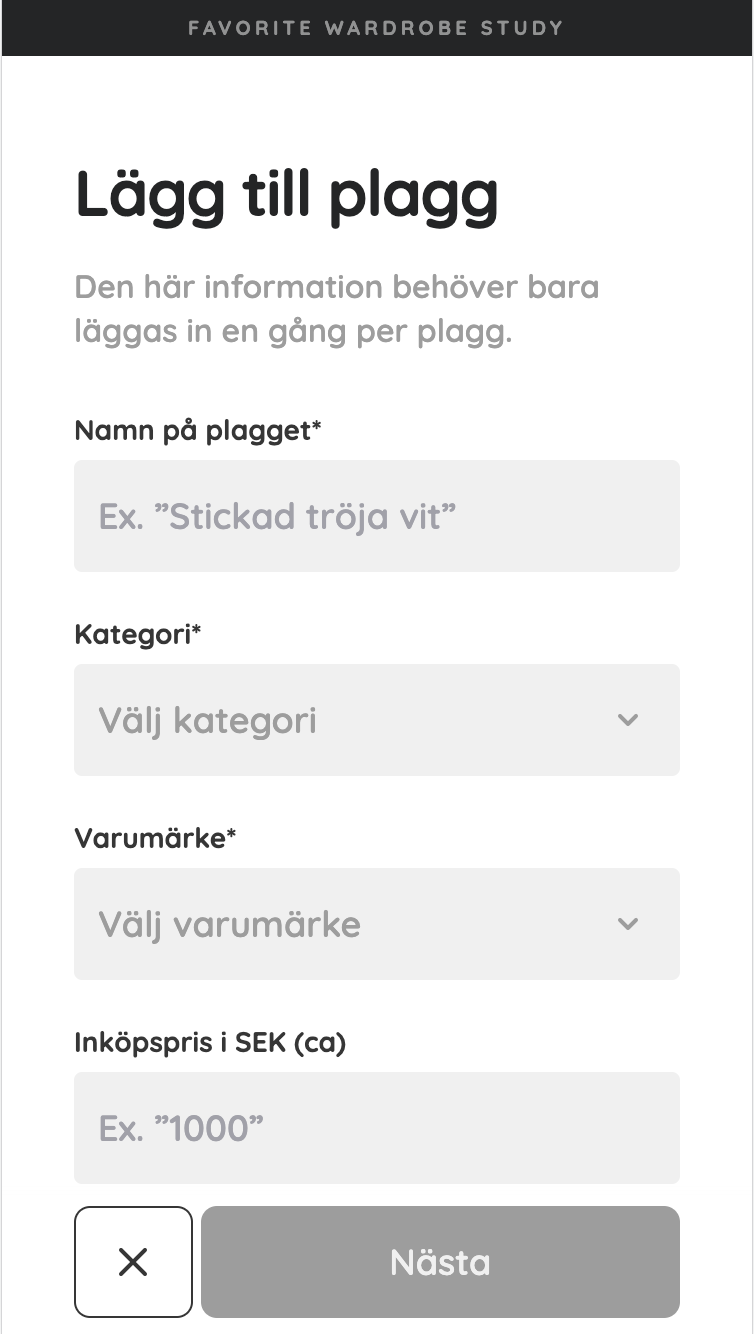RISE
An app to visualize your wardrobe usage
Together with ASKET, Filippa K, and Houdini Sportswear, RISE runs the Favorite Wardrobe project from 2022-to 2023 and aims to investigate how people use their wardrobes. The project will analyze how much and often different clothing categories are used during 100 days and apply demographic and economic perspectives to the data – all with the help of an app that we at Prototype have developed.
In Brief
- An app to make visible the clothing use of private individuals for 100 days.
- A study that is still ongoing with 365 participants.
- A project with a strong focus on data management.
Tech stack
React• Next.js• Tailwind• Firestore• Python
Sustainable development goals
The Challenge
The project takes shape, partly inspired by a blog post
The idea behind Favorite Wardrobe was inspired by, among other things, a Finnish consultant who tracked the use of all garments in his wardrobe for three years. RISE decided to copy the setup, together with three clothing companies that strive for sustainable consumption and circular models; Asket, Houdini Sportswear, and Filippa K. When RISE started looking for a tech partner to brainstorm platforms and costs with, they were recommended to reach out to Prototyp.
We were excited by RISE, the purpose of the project, the partner brands, and the fact that the project's output could lead to more significant efforts. This project is exactly where we want to be project-wise; experimental projects with a high level of technical creativity and a clear purpose to do things in new and better ways.
“As a consumer, I feel that I have poor control over how I use my wardrobe while, at the same time, trying to make smart choices when I buy clothes. I believe projects like this can increase awareness among both companies and consumers. I hope that can spark circular thinking in the industry and make individuals value their garments more.” - Jonna Karlsson Sellén, Tech Lead, Prototyp
Straightforward and fast implementation with advanced data management
The idea behind the project was straightforward from a technical perspective. Our initial task was to design a solution for printing QR codes that users could attach to their garments. Each QR code would contain a unique link where the user can register the use of specific garments. Each time the user uses the garment, it is scanned and “checked in,” along with the current date. For a garment’s first-time use, the user is redirected to a registration flow, where they can add data about the garment. In theory, a straightforward and user-friendly interaction flow.
The task that turned out to be the most time-consuming to solve was deciding how we should store the data and what data was necessary for the study. How do we build something simple that can be used easily by the study participants and at the same time provide the proper data foundation for those of us who are running the study?

The Team
Jonna Karlsson Sellén
Tech Lead, Prototyp
Katja Lindeberg
Developer, Prototyp
Balthazar Berling Kelpe
Developer, Prototyp
Sophie Pettersson Dahl
UX Designer, Osynlig
Peter Algurén
Project Lead, RISE
The process
Agile instead of waterfall
The biggest challenge with budgeted projects is to avoid working in waterfalls and go for a more agile mindset throughout the project. Ordering a solution with precise requirements is one thing, but building a good product is entirely different. So again, trusting the process is the key to success.
To make the project as efficient and agile as possible, we had several standups/week and short reconciliations/demos with the entire project team, including the clothing brands involved in the study.
How often can you wash a QR code?
About halfway into the project, we encountered our biggest challenge. The printed QR codes to be put on all garments did not meet the number of washes needed to reach a sufficient amount of data in the study. However, thanks to RISE’s dedication, innovative partners (the clothing brands), and the design agency Osynligt, we were able to develop an alternative solution together. We had just over a week to come up with a solution and chose to enable the use of unique links per user instead of per garment, with a modulation of the database and altered navigation in the app as a result.
The user form underwent the most iterations
The part that had to be iterated the most during the study was the form that the user filled in for each new garment registered in the app. The registration form had to be continuously adjusted to both what data we wanted to gather and usability.
We had to modify our database quite a lot during the project, but the results were good, and the handover to the data manager at RISE worked well.



The Result
A finished app but ongoing study
After five months of iterations, the end product resulted in a flow where users receive a text message with their unique link every morning. The link takes the user to a start page where all registered garments are listed and categorized. Here, the user can either register new garments or check-in existing garments.
The study is still ongoing in the meantime. Prototyp supports by answering questions that arise in data extraction from the 365 participants. A month down the road, participation has remained very high in the study.
“Testing things sharply at an early stage is often a key issue in both business and research. Prototyp has an interesting way of working where they build good enough apps MVP:s in a very short time and at a fraction of what apps usually cost to build. They are also competent and easy to work with.”
- Peter Algurén, project Manager RISE
One of the most fun aspects for us in this project was collaborating with RISE for the first time. Of course, we have prior experience working on research projects, but the unique thing here was the data, how we save the data, and we put a lot of emphasis on making the data part as good as possible.
Stora Enso
We developed a proof of concept for optimizing and saving energy in the industry sector.
We use cookies to give you a better experience when visiting our website. Read more about how we handle cookies